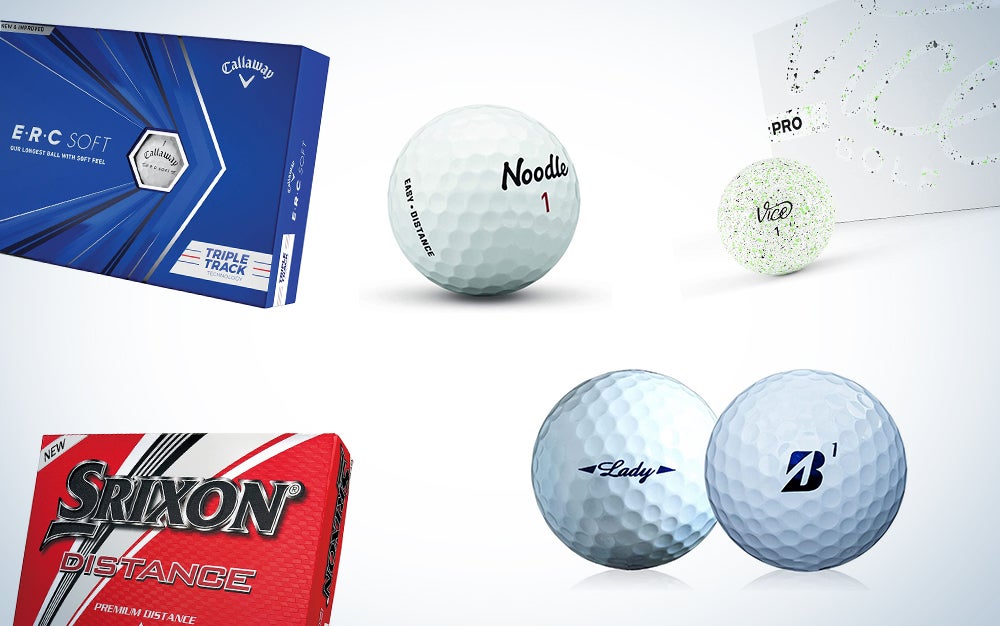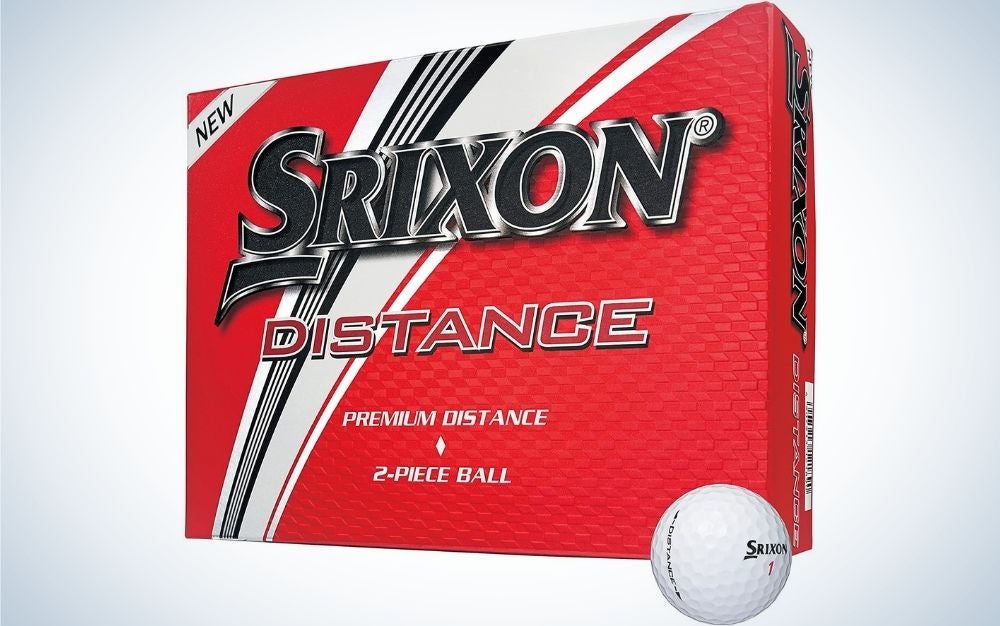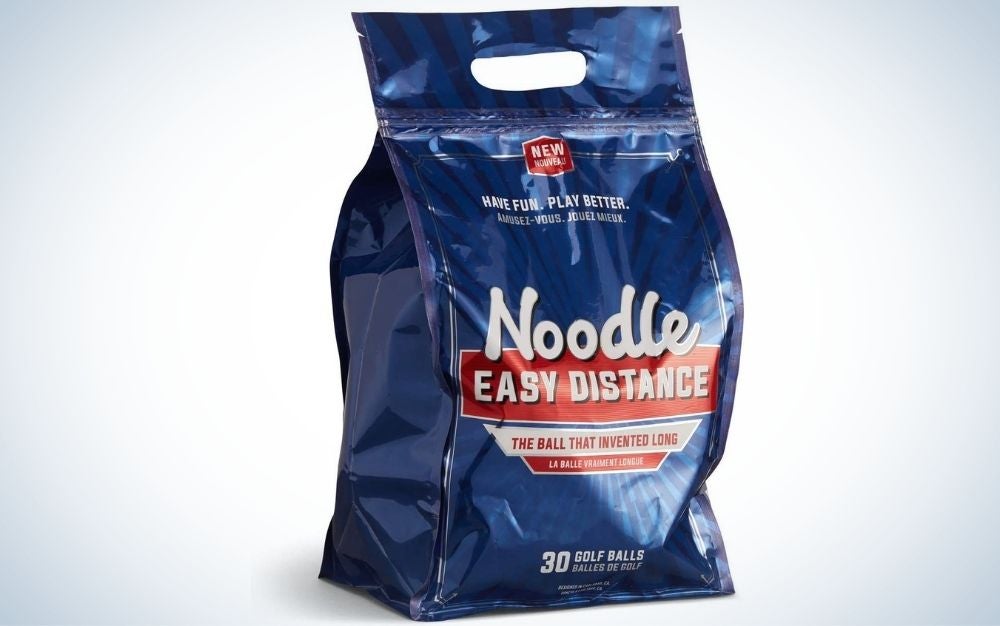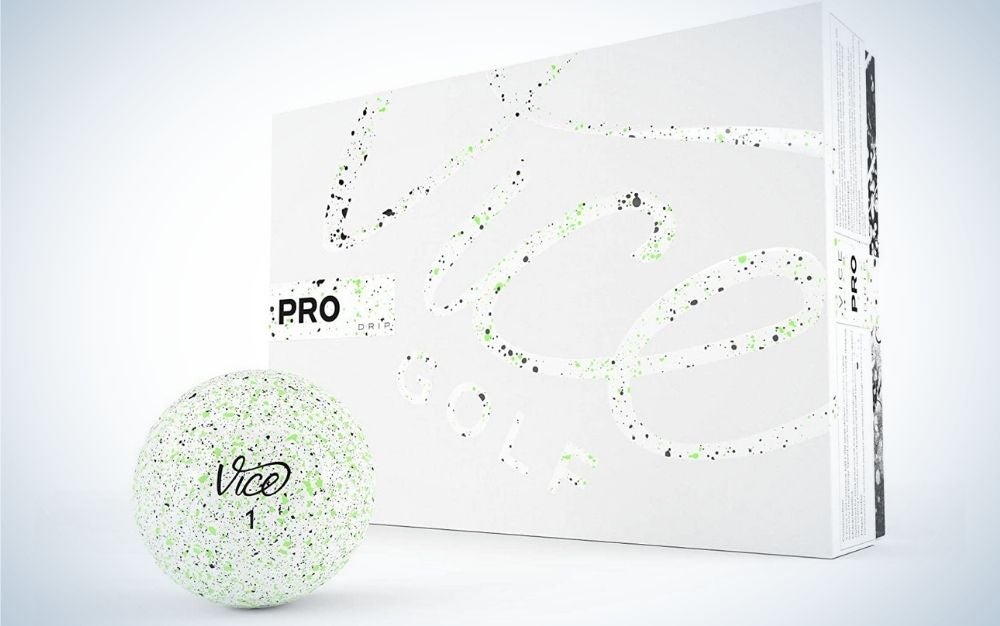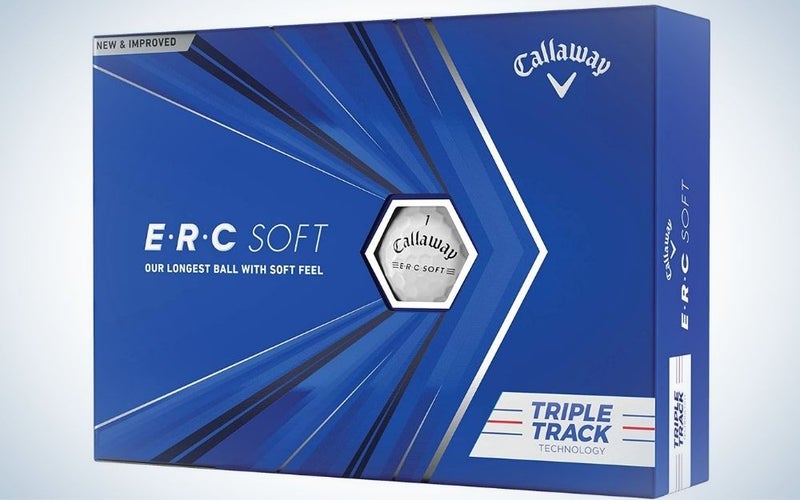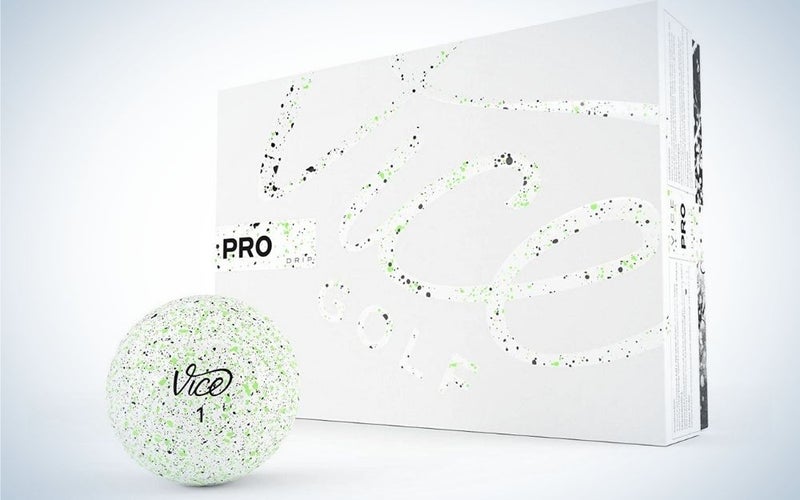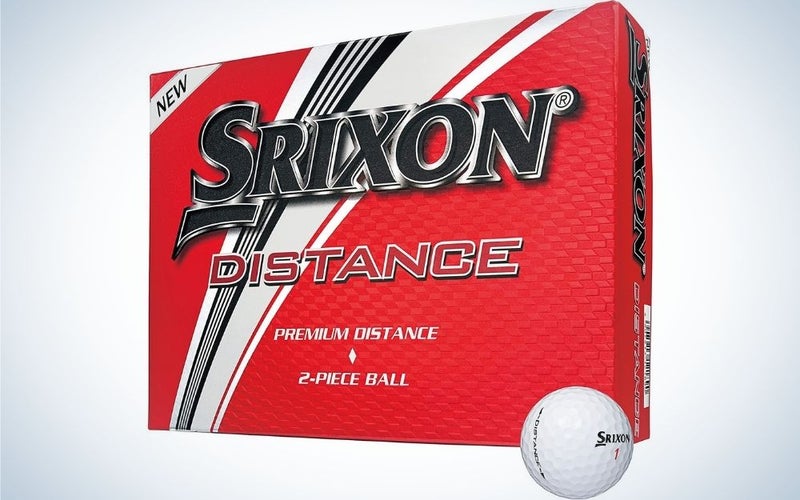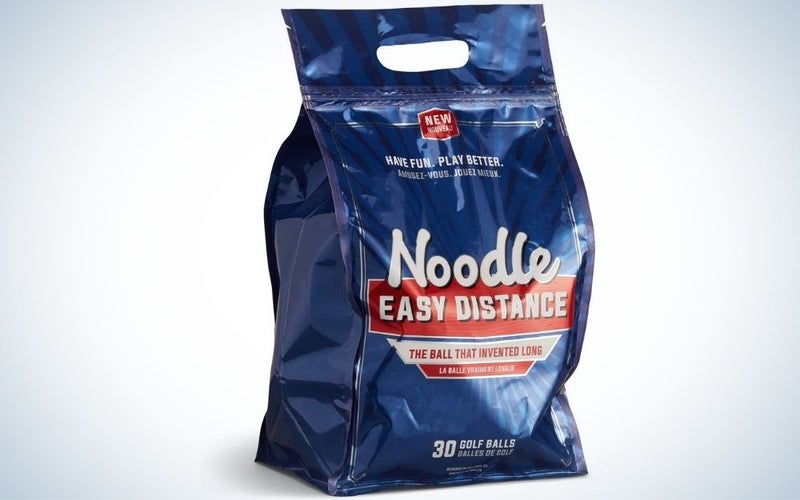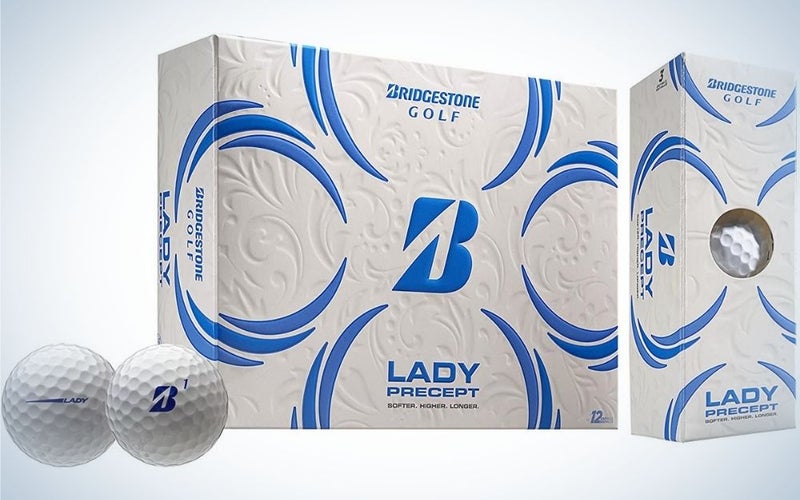We may earn revenue from the products available on this page and participate in affiliate programs. Learn more ›
High-end golf balls make lots of lofty promises on their boxes and marketing material. Who wouldn’t want straighter shots, longer drives, and more feel around the green? Unfortunately, those pricy spheres don’t always perform as promised for players just learning the sport. The best golf balls for beginners typically aren’t the same models that the pros use on TV every week.
Some players will always shell out big bucks for high-end balls, but lose enough of those Titleist Pro V1 balls during a round and it will cost you as much as your green’s fees for the day. Choosing the right beginner ball means balancing price and performance in a way that suits your specific game. The right one will feel great when it hits the sweet spot of the club, but won’t feel too bad when it ends up in that water hazard you totally thought you could clear with a five iron.
- Best Callaway: Callaway ERC Soft
- Best colored: Vice Golf Pro
- Best for distance: Srixon Distance
- Best budget: Taylor Made Noodle Easy Distance
- Best for women just getting started: Bridgestone Lady Precept
How we picked the best golf balls for beginners
The Pop Sci writers and editors may not have the prettiest golf swings around, but there’s ample enthusiasm for the game around the offices. We drew from personal experience, as well as extensive research including input from a few high-level players and online resources. We considered dozens of balls ranging in price from super-cheap to expensive in order to try and find the best possible balance between affordability and performance.
Things to consider when looking for golf balls
If you’re willing to go out and spend a ton of cash on a dozen balls, then old stand-by options like the Titleist Pro V1 or the Taylor Made Tour Response, then you’ll get excellent all around balls. They may not be suited to your specific game, however. Here are some things to consider when searching for the best golf balls for beginners.
Layers
A golf ball isn’t a solid sphere of material. There are layers. Choosing how many layers and what they’re made of can have a profound effect on how the ball travels through the air. Most affordable balls use a simple two-piece design, which involves wrapping a solid core in a dimpled cover. Two-piece balls are typically more durable than those with more layers and roll for a long time when you hit the fairway.
As you move up the food chain, you’ll find balls with three, four, or even five different layers of material involved in the manufacturing process. Each layer provides a specific characteristic. For instance, in a four-layer ball, the hardened inner core provides explosive distance off the driver while the outer layers provide more spin with the irons for added control.
Color
Colored balls used to be looked down upon by serious golfers. They stuck to white and left the bright colors to the mini golf course. In recent years, however, that has changed. Now, you can get excellent balls in a variety of colors that can make them easier to find on the fairway and in the woods. Now, you can totally show up to the local course with a bright yellow or orange ball without any judgment.
Spin
A golf ball is going to spin when you hit it, but the speed and direction of that spin determines what kind of shot you make. Low spin golf balls are popular with beginners because they tend to downplay common problems like slicing. Low-spin balls won’t carry as far in the air, but they do tend to run more once they bounce.
High spin balls, on the other hand, carry more and land softer. This also gives them a better feel around the green when you’re hitting short shots. You’re more likely to get an iron shot to grab onto the green and roll back toward the cup. Predictably, middle spin balls try to offer both advantages, which means a little compromise for a more rounded game.
Compression
The speed of your swing determines large parts of your game. Getting a ball that matches your swing speed will help improve your skills. High compression balls don’t get as squashed when the club face strikes them, which makes them good for faster swing speeds. Lower compression balls squash more upon impact, which typically gives better distance for slower swings. 60 and below falls into the low compression category, while over 100 compression ratings fall in the high-compression category.
Best Callaway: Callaway ERC Soft
Callaway
Why it made the cut: This combination of materials and construction offers long distance off the tee with a solid feel around the green.
Specs:
- Low compression (60)
- Low spin
- 3-piece construction
| Pros: | Cons: |
Under this ball’s cover, you’ll find Callaway’s high-speed mantle which creates a high launch angle but low spin rate. That makes it easier for beginner players to get the ball into the air with the driver to get better distance. That extra layer also helps with energy transfer in order to give the ball better feel around the green on short shots despite its low spin rate.
That durable cover and mantle also make the ball more durable, so it’s less likely to get a big, game-ruining cut in the outer layers during a mishit.
Callaway’s Triple Track tech emblazons each ball with a series of three lines, which makes lining up putts much simpler thanks to the visual cue. The real draw here, though, is that high launch angle, something many new players struggle to achieve.
Best colored: Vice Golf Pro
Vice
Why it made the cut: They come in a variety of cool colors and perform well even for players who have a faster swing.
Specs:
- Medium-low compression
- High spin
- Three-piece construction
| Pros: | Cons: |
Vice Golf Pro offers the best-colored golf balls in typical white, as well as neon yellow, neon red, and even a couple very cool splatter colors that look nothing like almost any other high-end ball on the market.
It’s not fashion over function, however. The Vice balls employ a three-piece construction with a very thin cover to increase spin and feel while hitting shorter shots. They’re optimized for high ball speed, so they’ll work for beginners who hit harder off the tee. Beginners don’t always have slow swings.
The medium-low compression offers more feel and feedback, which is something that beginners will begin to appreciate more as their game improves. It’s a ball that players can grow into for a little more than half the price of some other pro-grade balls.
Best for distance: Srixon Distance
Srixon
Why it made the cut: If you want to go big off the tee, this ball is designed specifically for a high launch angle and low spin for maximum carry.
Specs:
- Low compression
- Low spin
- Two-piece construction
| Pros: | Cons: |
There are few things as enjoyable in sports as crushing a drive off of a tee. Srixon’s distance-specific balls utilize soft compression to get a higher launch angle off the tee. The dimple pattern has fewer dimples, which cuts down on wind drag as the ball cuts through the air for maximum flight time.
Because the balls use a two-piece construction, they’re some of the most durable offerings on the list so you’ll save extra cash since you won’t have to replace them as often. That is, of course, assuming you don’t hit them into the water.
This option is particularly good for high-handicap golfers who are just starting out and need extra help making it to the green on long holes making them the best golf balls for distance.
Best budget: Taylor Made Easy Distance
TaylorMade
Why it made the cut: High compression makes this ball fly off the club face, but they’re super cheap so they’re great for just starting out.
Specs:
- High compression
- Medium spin
- Two-piece construction
| Pros: | Cons: |
These Taylor Made two-piece golf balls are designed to last, which combines with their ultra-low price to make these the best cheap golf balls for beginners and for golfers that lose a ton of balls in the water and in the deep woods.
The high-compression cores make this ball particularly good for golfers with low swing speeds, which is typical in new players. Players can concentrate on getting their golf swing form correct without trying to crush the ball and still expect to get good distance.
The unique dimple pattern on the ball helps keep the ball on a straighter path through the air, which is good if you have a hook, or more likely, a slice.
Best for women just getting started: Bridgestone Lady Precept
Bridgestone Golf
Why it made the cut: These soft, low-spin balls provide a high launch angle and maximum distance from slower swing speeds.
Specs:
- Low compression
- Low spin
- Two-piece construction
| Pros: | Cons: |
Inside this two-piece ball, you’ll find a graduated core, which gets firmer as it approaches the edges. That provides some of the benefit of a three-piece ball with the durability of a two-piece. Many women’s balls in the past were simply distance balls rebranded, but Bridgestone specifically engineered these to work in this capacity.
Each ball has 330 dimples on the outer cover, which creates better aerodynamic properties that allow it to get up in the air faster and carry longer distances. These balls are also super-cheap, which makes them the best golf balls for women just getting started and across the board.
FAQs
Q:
Should beginners use soft or hard golf balls?It depends on your game. Soft balls make it easier to get the ball up in the air, which can lead to more carry and better feel with the irons. Harder balls are more durable and pop more off the club face, which means they will run once they hit the ground. If you have a slow swing speed, but want distance, a hard ball will help you go longer. If you have a normal or fast swing speed, you can take advantage of the better feel from a softer ball.
Q:
Do golf balls matter for high handicappers?You want a ball you can grow into and stick with as you get better. If you can only afford the very basics, it will take some of the sting out of lost balls. But, investing a little extra money will make your game more consistent over the long run.
Q:
What is a good golf ball for a slow swing speed?Harder balls with higher compression help create more pop off the club face, which helps to counteract a slower swing speed. This can also be helpful if you’re working on your form and don’t want to have to swing super hard.
A final word on golf balls for beginners
While we can’t stop you from spending tons of cash on pro balls right out of the gate, it should be clear by now that it’s not necessary to have fun or even play your best game. The best golf balls for beginners offer specific features that make low swing speeds, mishits, and lost balls less painful in the long run.
